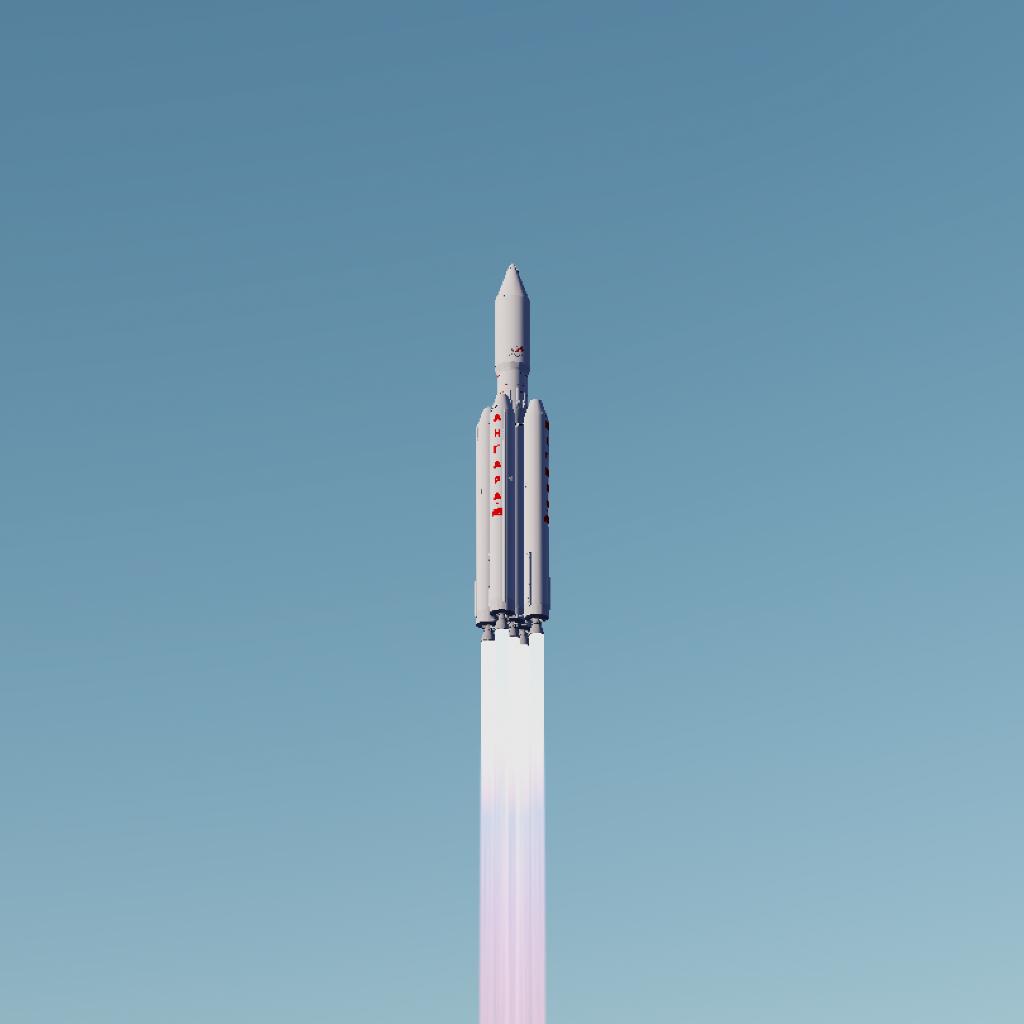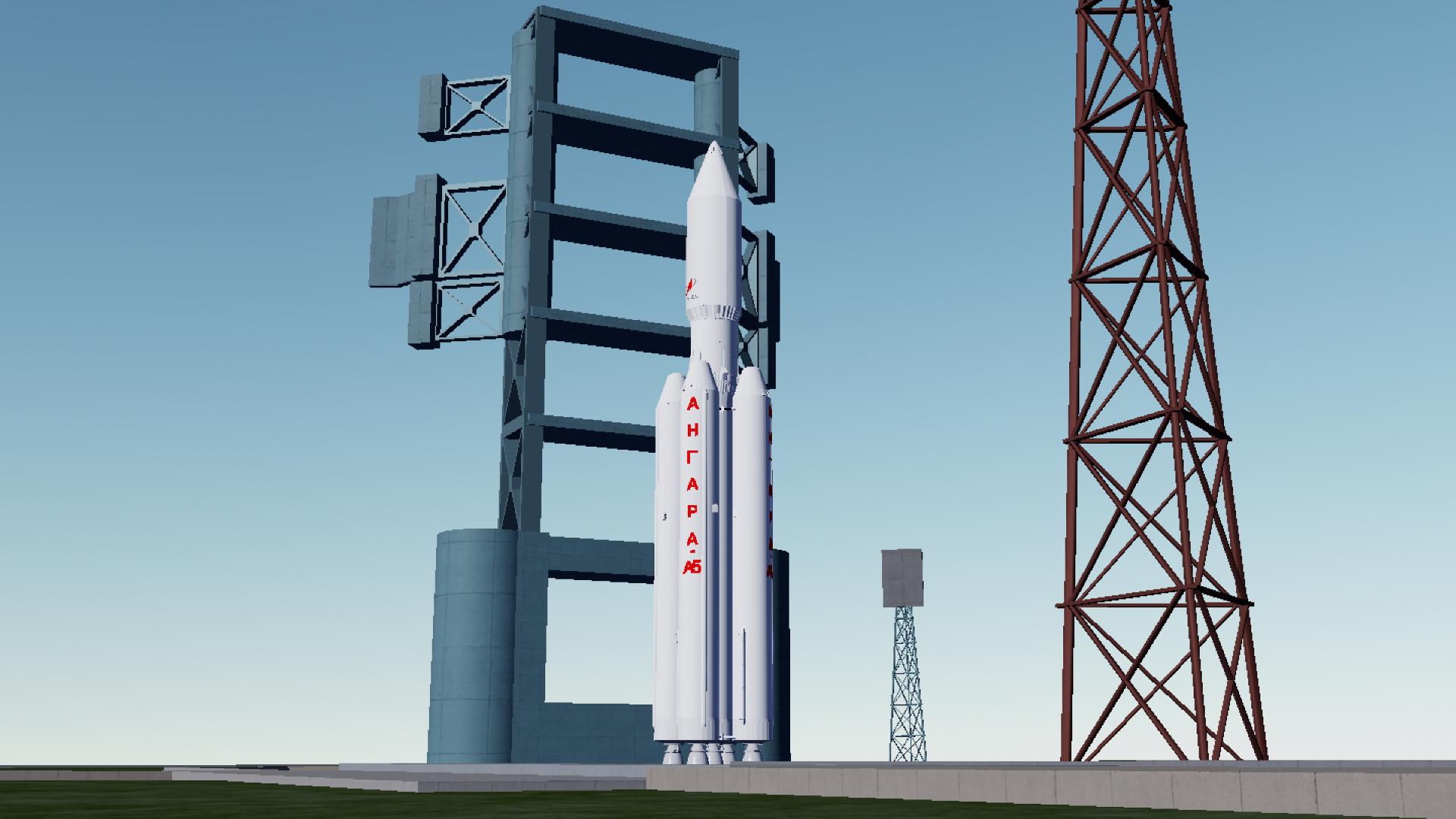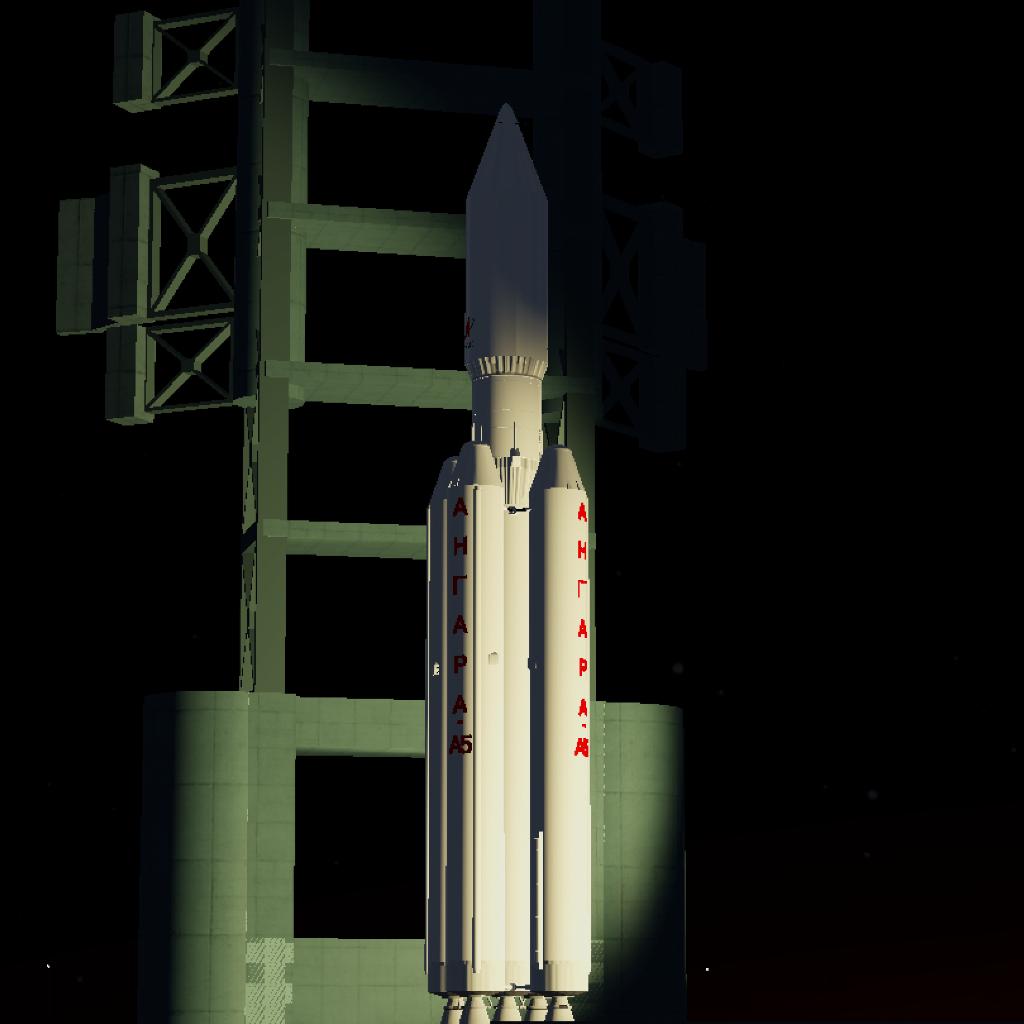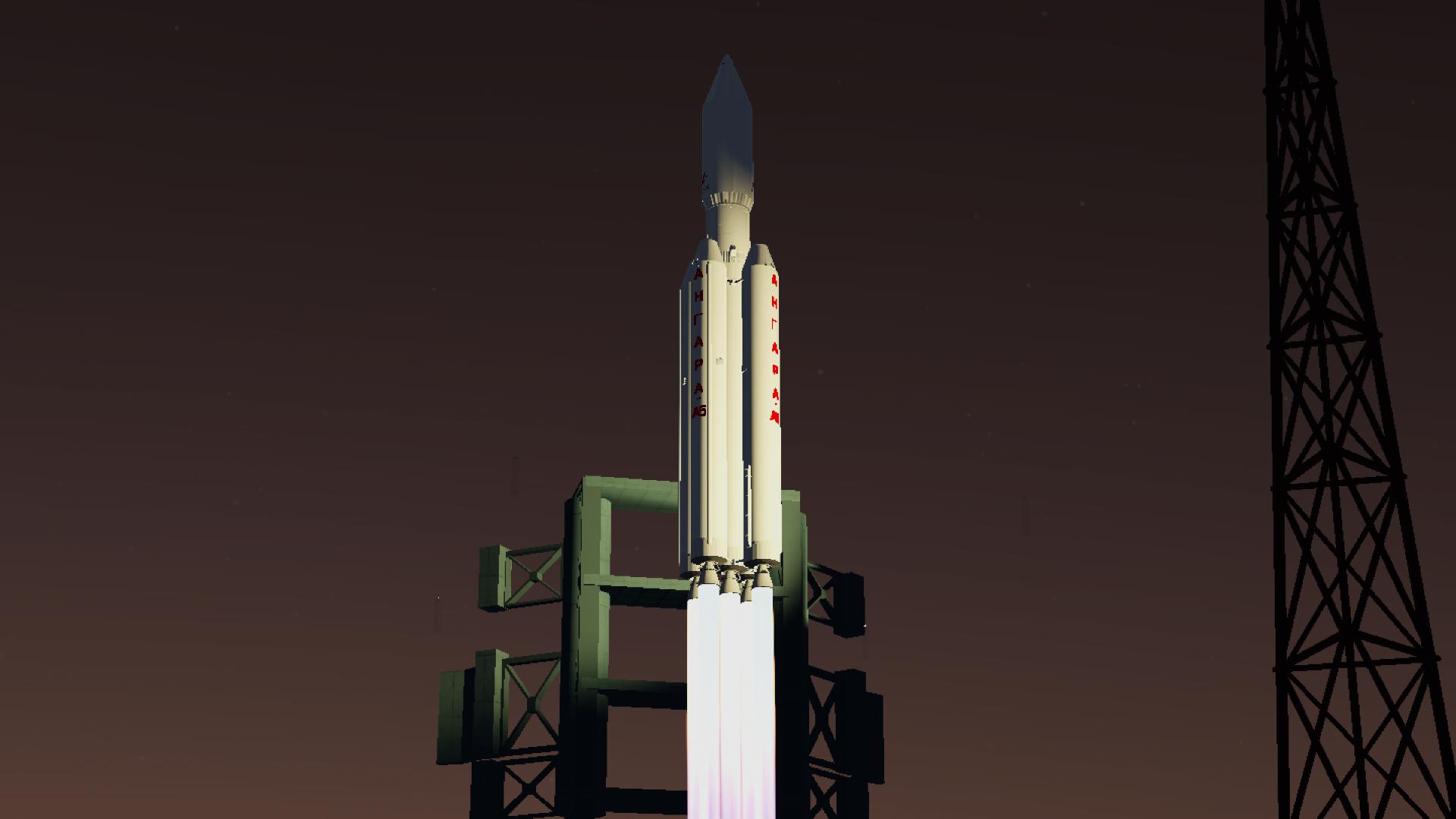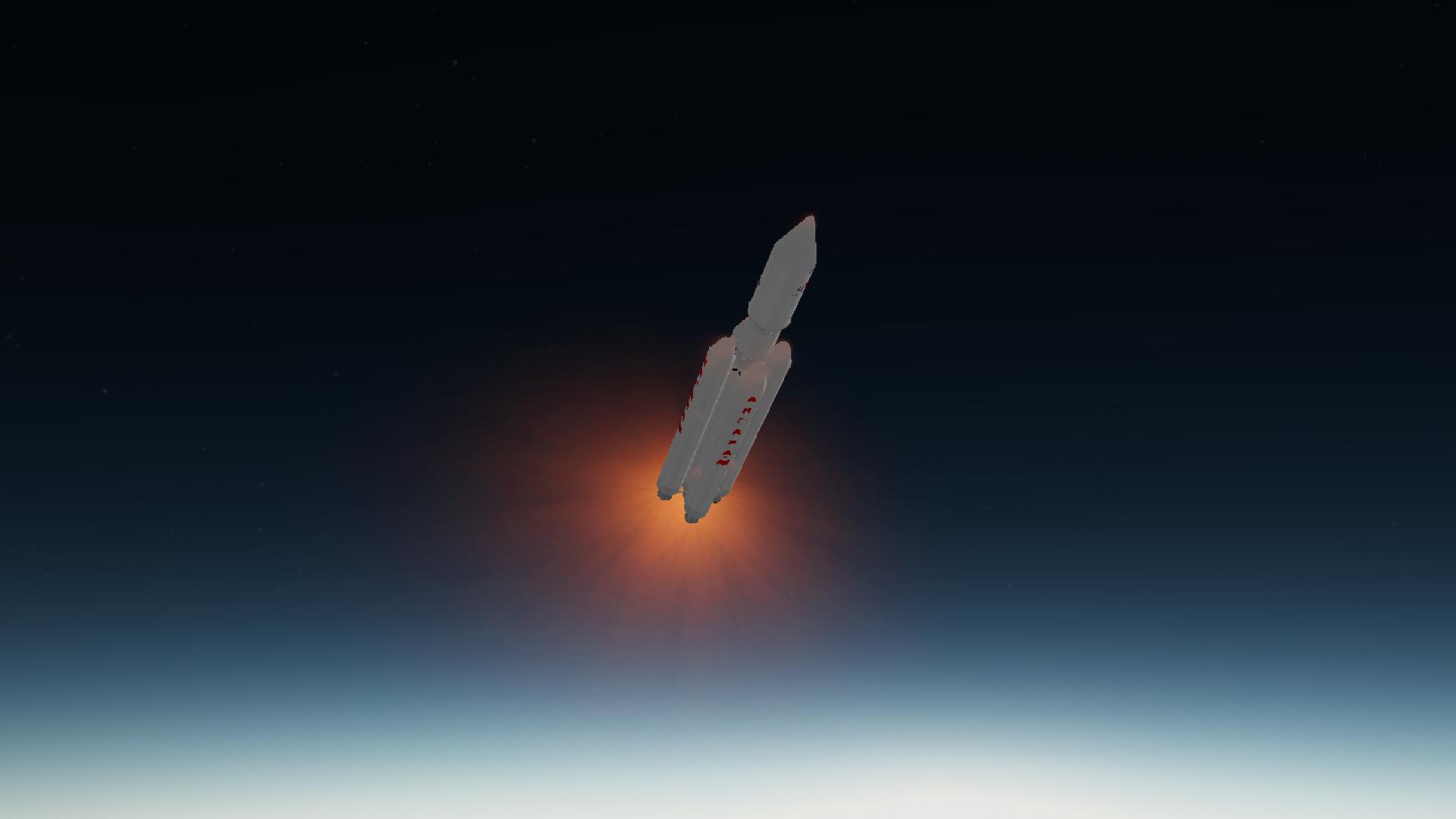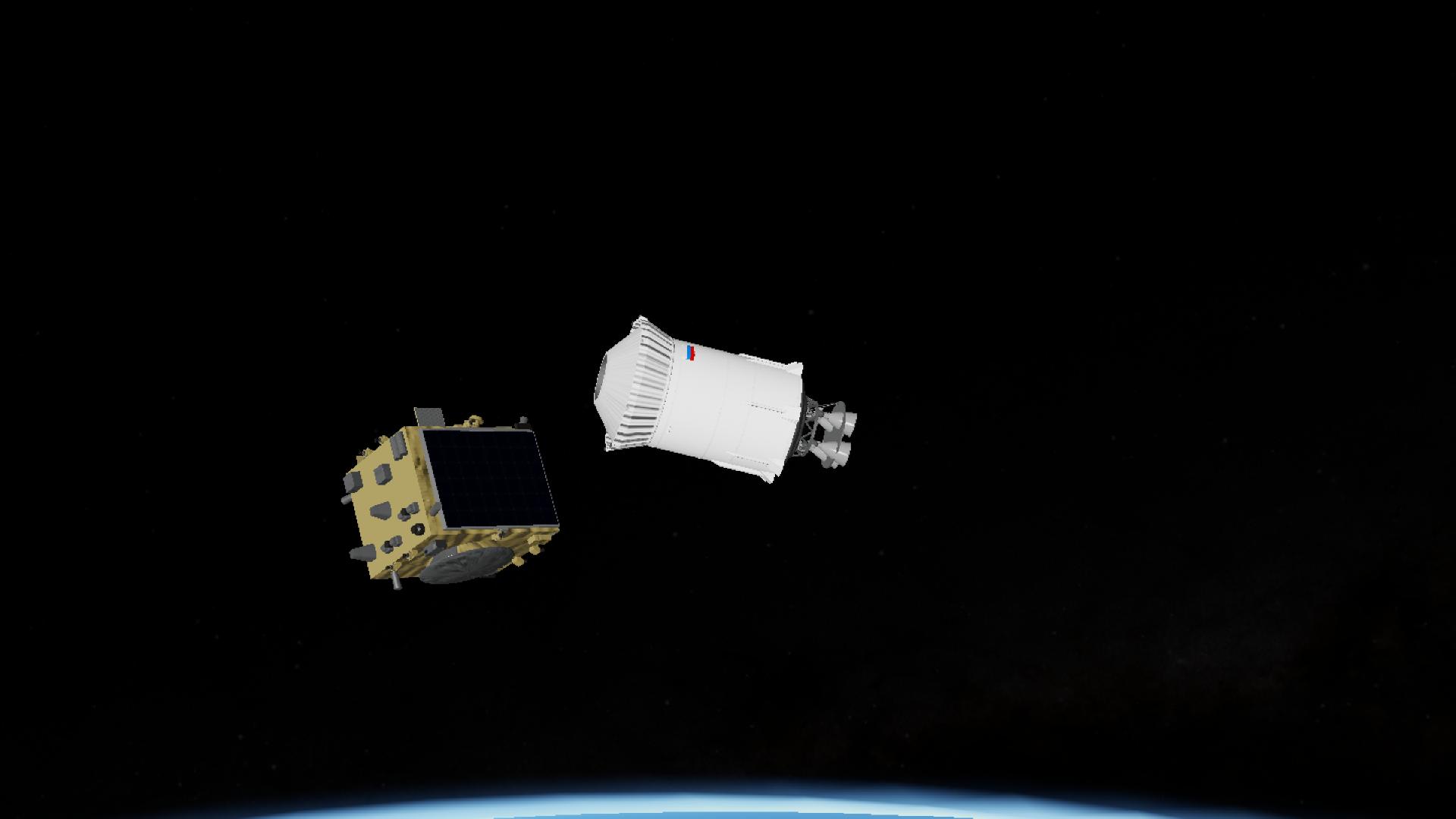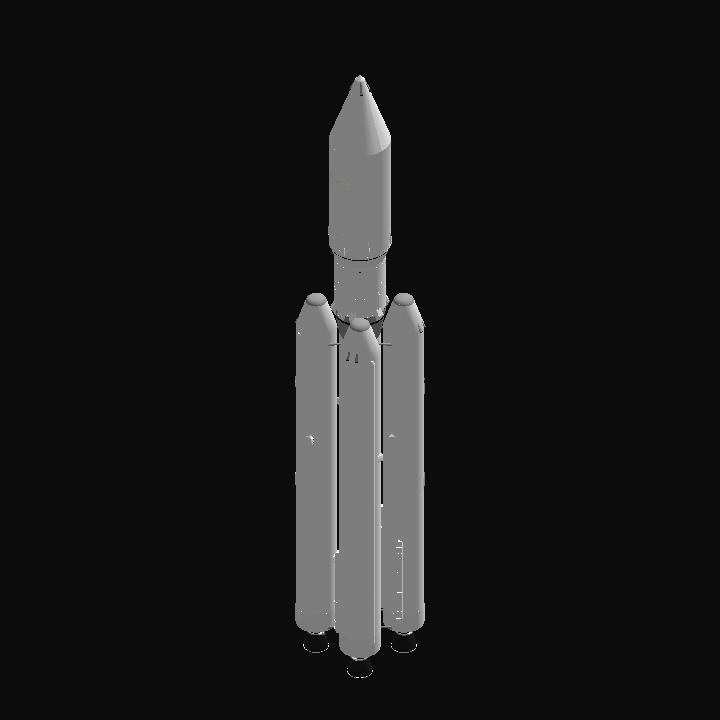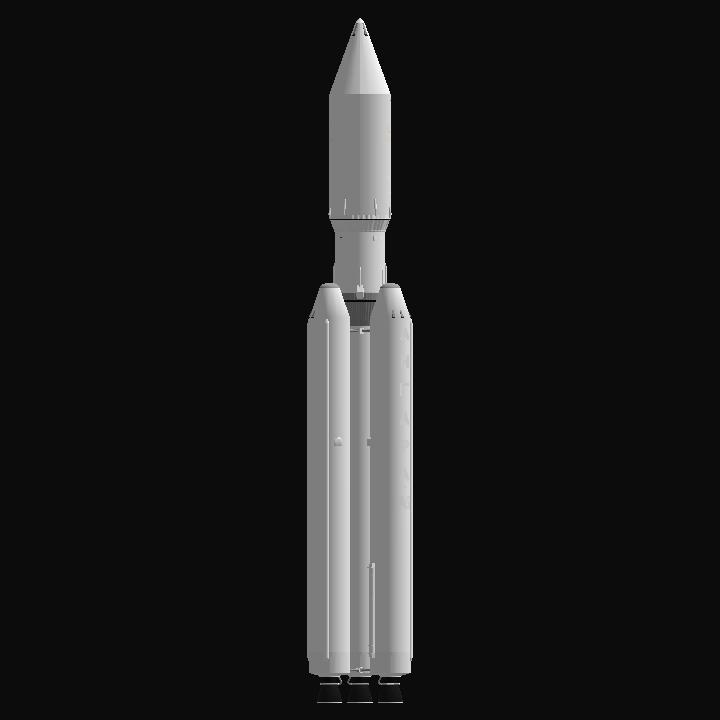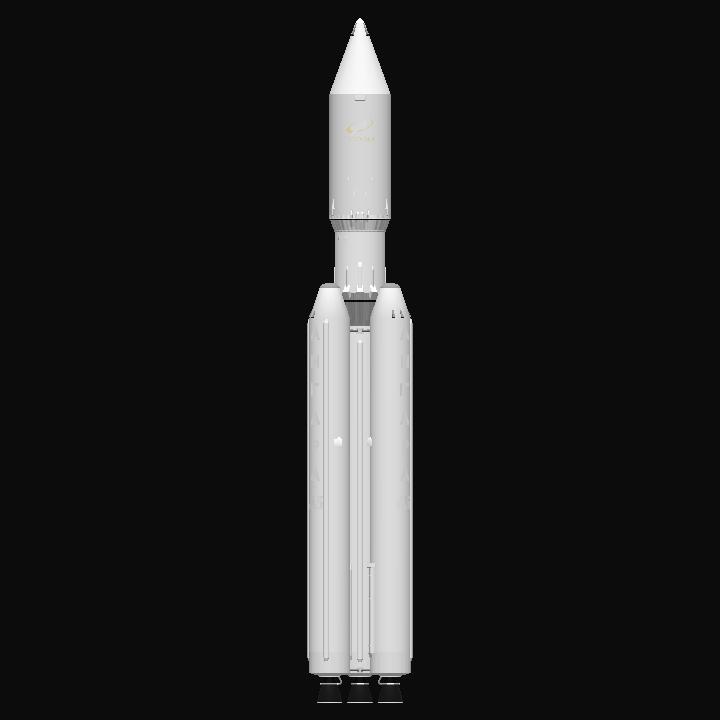Auto Credit Based on JotaVe's Angara-a5
Angara-A5 Vehicle
Angara-5 uses four standard URM-1 boosters as the first stage and a single URM-1 booster as its second stage (core stage). A prototype of the URM-1 made three flights as a part of the South-Korean KSLV rocket and also propelled the Angara-1.2PP rocket in July 2014. The URM-2 booster serves as the third stage. It also performed successfully during the flight of Angara-1.2PP. The additional upper stages on Angara-5 are used to send satellites from their initial parking orbits to the geostationary orbit or into deep space. There are two upper stages in use: Briz-M and DM-3.
Flight Profile
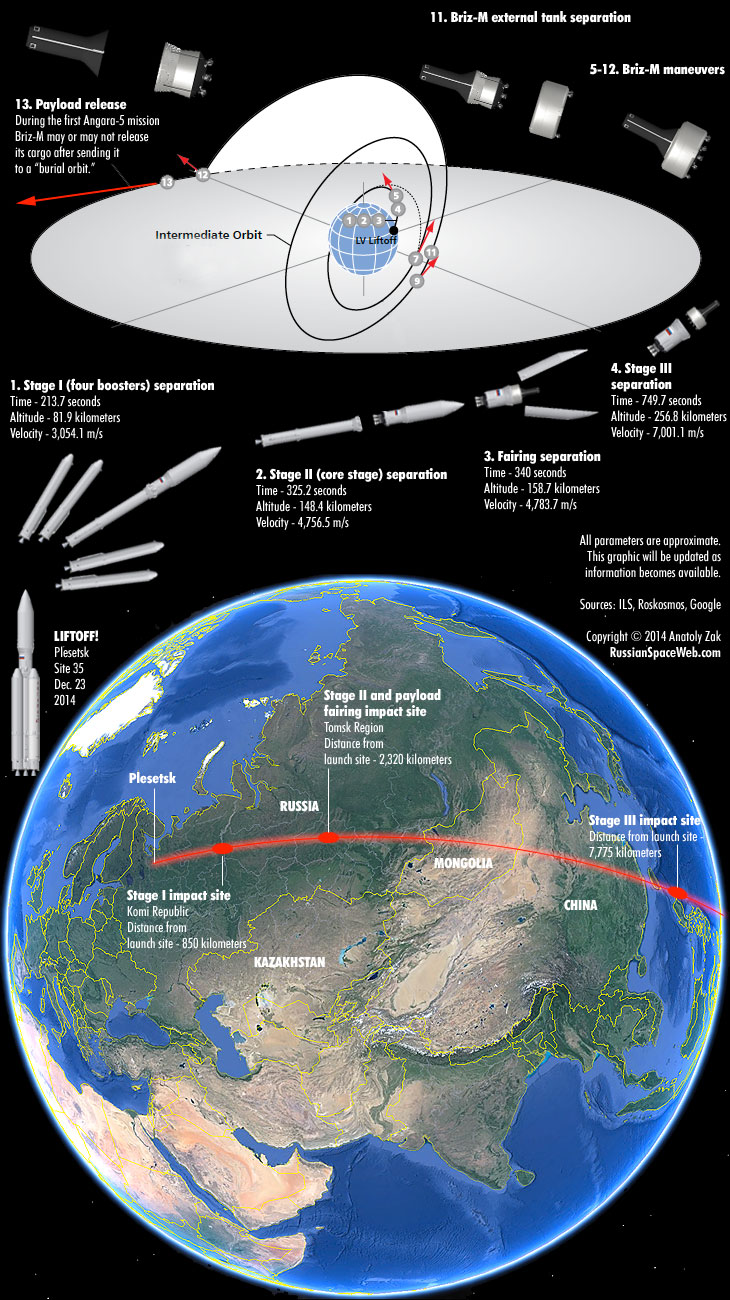
Angara-5 lifts off with four boosters of the first stage and a central booster of the second stage all igniting their RD-191 engines on the launch pad. After 47 seconds of ascent at full thrust, the RD-191 engine on the central booster throttles down to 30 percent of its capability. It enables the booster to conserve propellant and burn longer than its strap-on siblings. After the separation of four boosters, the core stage returns to full thrust and fire for a total of 325 or 329 seconds. It then separates with the help of small solid motors installed "backwards" at the very top of the rocket's transfer compartment. The URM-2 then ignites its RD-0124 engine to accelerate the payload section to a nearly orbital speed. In a typical mission, the URM-2 fires until T+750 seconds in flight and the upper (fourth; not available in this specific version) stage then completes the job with a short firing of its engine to enter an initial parking orbit with an altitude ranging from 180 to 250 kilometers. The same stage later restarts its engine to reach a variety of higher orbits, depending on a particular mission.
When launched from Plesetsk, Angara-5 was to be able to enter orbits with an inclination of 63, 76, 82.5 and 93.4 degrees toward the Equator. In case of missions to the geostationary orbit, the upper stages would have to conduct propellant-hungry maneuvers to tilt the orbital inclination from the initial 63 degrees to a near-equatorial plane.
For more information:russianspaceweb
Image Gallery
PLEASE READ:
•I do not recommend taking off the fairing, only drag it out using the Translate Part Tool. If you disconnect it, you will have to reconnect all the fairing's side interstages and separation mechanisms at the bottom (2 interstages inside each half and 2 pieces attached at fairing's bottom)
Credits:
—Logo
—Satellite used
IF YOU LIKED IT, PLEASE UPVOTE. THANK YOU.

GENERAL INFO
- Predecessor: Angara-a5
- Created On: Android
- Game Version: 1.3.204.1
- Price: $128,596k
- Number of Parts: 439
- Dimensions: 49 m x 8 m x 8 m
PERFORMANCE
- Total Delta V: 12.3km/s
- Total Thrust: 13.6MN
- Engines: 34
- Wet Mass: 7.6E+5kg
- Dry Mass: 54,839kg
STAGES
| Stage | Engines | Delta V | Thrust | Burn | Mass |
|---|---|---|---|---|---|
| 1 | 5 | 6.7km/s | 10.5MN | 3.5m | 7.6E+5kg |
| 2 | 0 | 0m/s | 0N | 0s | 1.93E+5kg |
| 3 | 0 | 0m/s | 0N | 0s | 45,249kg |
| 4 | 4 | 5.6km/s | 295kN | 7.2m | 45,249kg |
| 6 | 2 | 5m/s | 42kN | 5s | 44,765kg |
No Comments
1 Upvote
Log in in to upvote this post.

